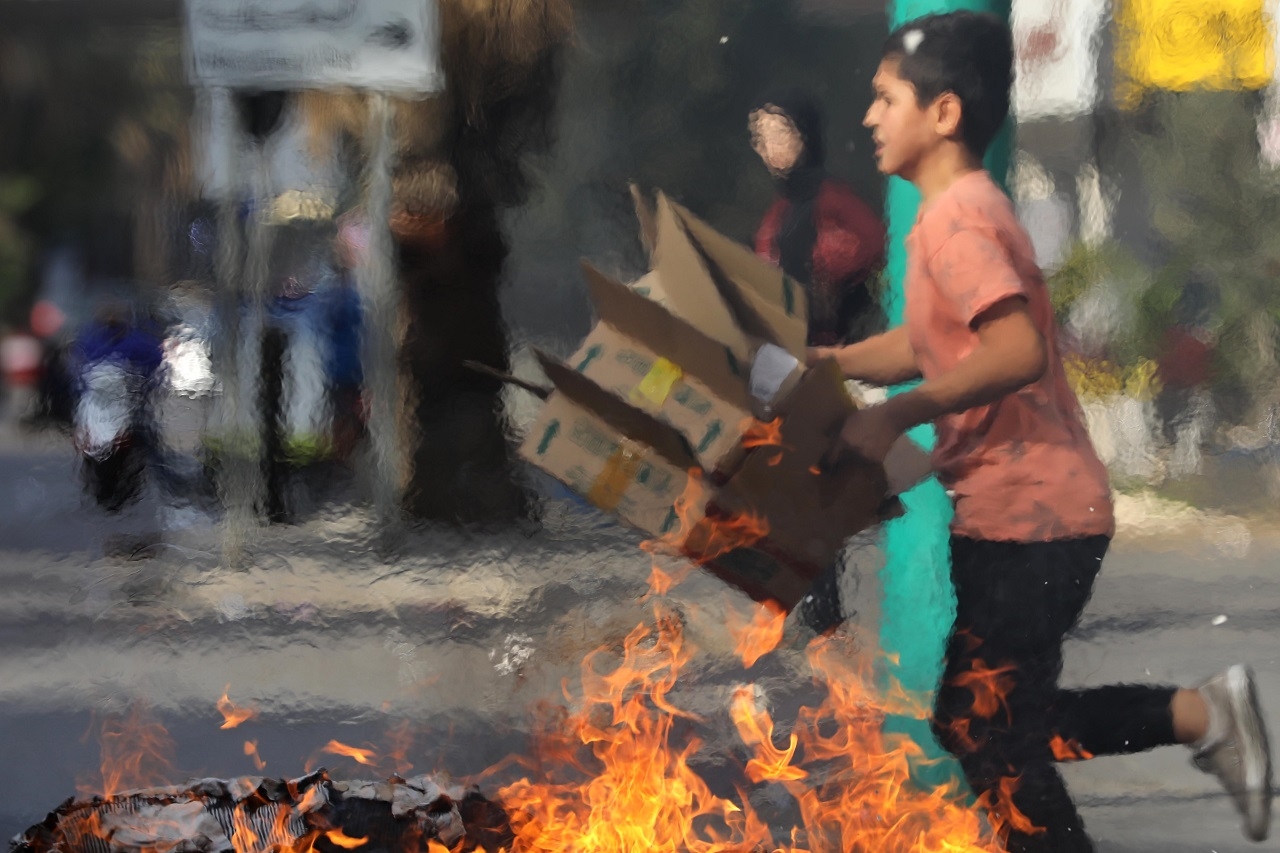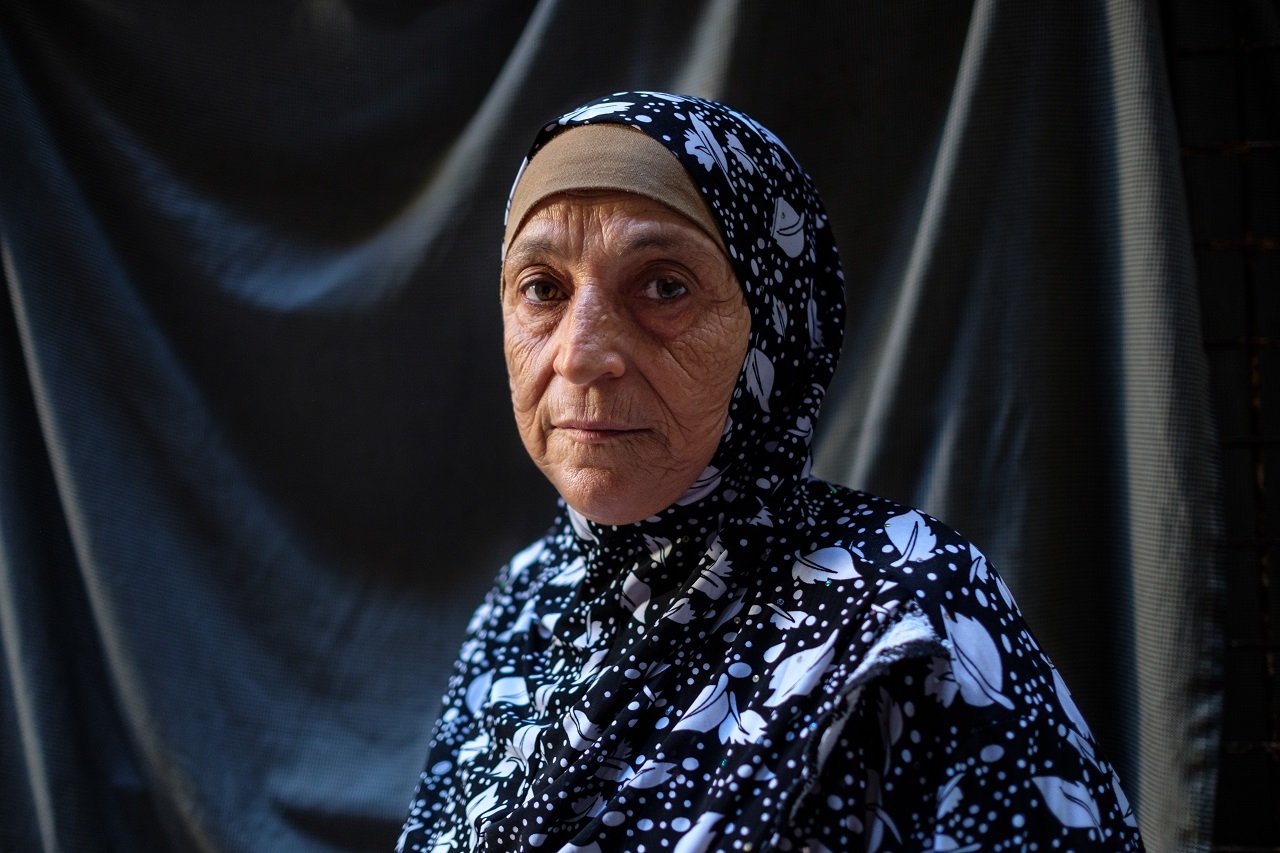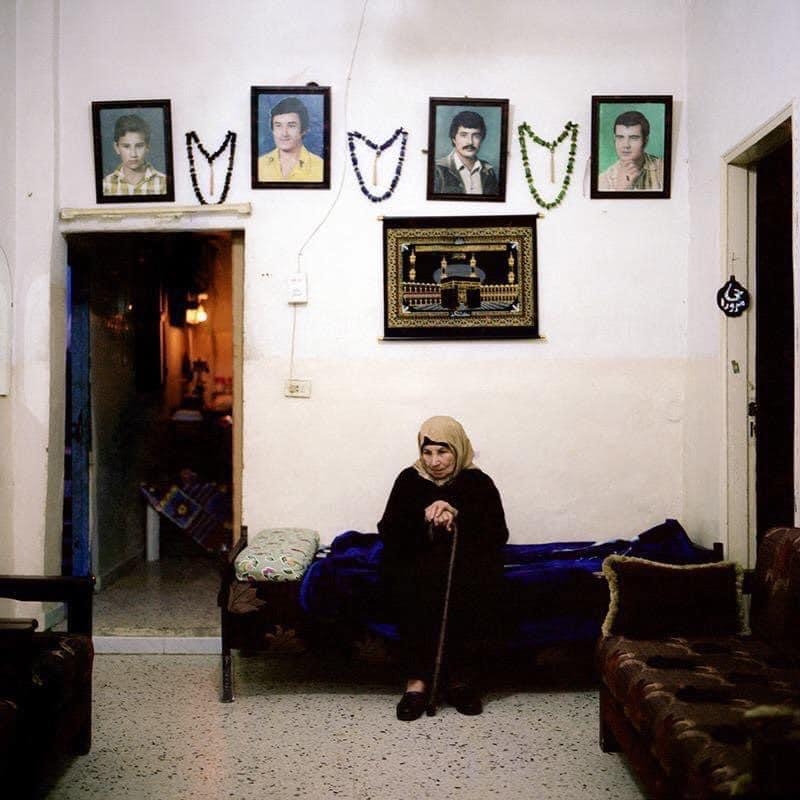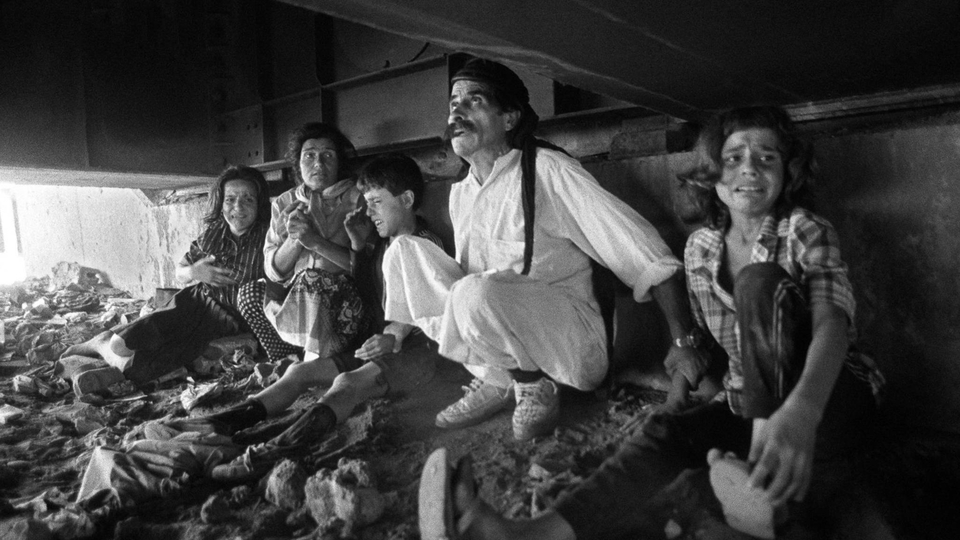Capturing the End Times: The Unseen Realities of Photojournalists in Lebanon
While Marwan Tahtah has been a professional photographer since 2000, his fascination for the medium was sparked by a picture he didn’t take. One night in 1987 or 1988, during the final years of the Lebanese civil war, a missile fell on a nearby building facing the Aresco Palace in the West Beirut neighborhood of Sanayeh, where he and his family had sought refuge from the bombardments. From the window, he saw the fire caused by the explosion form a striking triangular shape. “The fire had a sound,” he tells The Public Source.
We speak to Tahtah and other photojournalists about their early encounters with photography and some of the hurdles they've faced in their practice.
Getting Started: A Trial by Fire
Although Lebanon’s universities offer journalism programs and photography courses, the specificities of photojournalism aren’t taught academically in the country. For this reason, like most in the profession, Tahtah learned the ropes from older colleagues. The days of analog photography “taught me patience,” he says. In order to make the most out of the onerous material, he would load the film into the camera in the dark so as not to lose a single frame due to light exposure, gaining up to 39 frames per roll instead of the usual 36.

A child runs, cardboard boxes in hand, to help protestors block the main road in Corniche El-Mazraa, Beirut, over deteriorating living conditions. Corniche El-Mazraa, Beirut, November 2021. (Image courtesy of Marwan Tahtah)
Many Lebanese photojournalists have made their mark capturing some of the country’s most difficult moments. George Azar, a photographer and documentary filmmaker, began his journalistic career in his early 20s when he returned to Lebanon from the US in 1981, in the middle of the civil war. He would rent a bed for $2 per night in Hamra and live off the “bang-bang pictures” he took from “the eyes of a 20-year-old man,” selling his photos for $60 each.
“The story in Lebanon is war, so try to have guns in your pictures. A person firing is better than a person just holding the gun. Even children firing… but a woman firing a gun, that picture will go all over the world!”
He still recalls the instructions he received from an Associated Press editor after selling his first photograph: “The story in Lebanon is war, so try to have guns in your pictures. A person firing is better than a person just holding the gun. Even children firing… but a woman firing a gun, that picture will go all over the world!” Azar regrets not spending more time getting to know the people and listening to their stories. “I wish somebody had told me to look for the crying woman in the kitchen, for the kids in the streets,” he tells The Public Source. “In this industry, you get rewarded for the most thrilling and bloody action pictures. Doing war photography made me realize how propagandized I was. I thought war was romantic, exciting, and sexy. I remember being here and thinking I was going to die. I have been deceived into thinking that there is something noble about war, but this is horror.”
Dalia Khamissy, meanwhile, grew up surrounded by photographs of her extended family from the 1920s and ’30s, thanks to her late father’s love of photography and cinema. His cancer diagnosis in 2000 had a profound impact on Khamissy’s approach to photography, resulting in her deep adherence to documenting stories of loss, melancholy, and nostalgia.
In 2002, she went to Iraq with a group of priests on a religious mission, where she documented her daily observations and created her first photo series. In 2004, one year after the American invasion of Iraq, she learned that displaced people were stuck on the Jordanian-Iraqi borders in the Ruwaished refugee camp. “I wanted to document their stories,” she explains. “I taught photography to displaced people from all over the Levant as a way to obtain a UN permit to stay in the refugee camp.” She remembers how her work at the camp led her to become an unofficial courier, passing letters from one tent to the other. A year later, while she was working at the Associated Press, she received a message from a Kurdish man she had met back in the camp, informing her that his brother had obtained asylum in Sweden with his now-wife, and that they had named their newborn daughter Dalia, in honor of the photographer who had ferried their love letters back and forth.

Wafaa Ali Afif, 68, stands in front of her home in Shatila. She was born in the Bourj al-Barajneh refugee camp in 1954 but moved to Shatila after getting married, where she witnessed the massacre and raised her eight children on her own. Lebanon, September 2022. (Image courtesy of Rita Kabalan)
Coming from the film industry, Rita Kabalan started practicing photography in recent years. Like Tahtah, she too recalls a wartime memory she wishes she could have captured on camera. Her older brother was sitting on a lime green sofa, engrossed by what he was watching on the loud black and white television, while her mother stood around the corner in her pink robe, the door halfway open as she spoke with Lebanese Forces militiamen who were asking for her three sons to join the battle. “The boys aren’t here, they went to their aunt’s house on Ghannoum street,” Kabalan recalls her mother saying. In her work, Kabalan tries to “document love” like her mother’s love that spared her brothers’ lives that one night long ago.
The Aftermath of a Shutter Click
Due to the nature of their jobs, it seems impossible for photojournalists to avoid overexposure to trauma, as the essence of their work is to repeatedly capture encounters with death, the aftermath of traumatic events, a repetition of tragedy similar to what Slovenian philosopher Alenka Zupančič has called "repetition of the end."
“Al‘asa, the sorrow, begins when battles end, after the port explosion, after the war of 2006."
“Al‘asa, the sorrow, begins when battles end, after the port explosion, after the war of 2006,” Tahtah says. On the day of the August 4 explosion, he encountered a man who had lost his hand. The wounded man asked him to stay by his side, which he did. He tried to find the man weeks later, returning to the scene, in vain. To this day, Tahtah feels uncomfortable with bass frequencies; he fears that one time “a big sound” might stop him from doing the work he’s tremendously passionate about.
For fellow photojournalist Hussein Baydoun who grew up in Germany and learned Arabic by reading the Assafir newspaper with his grandmother, his work can be summed up as photographing a war that “never seems to end.” He recalls the early days of the October 2019 uprising, the significance of which, he feels, resonated more deeply for the photographers and journalists who were reporting on a momentous event in their own country’s recent history.
“We worked until 6:00 a.m., foreign photojournalists left early by midnight,” he recalls. Despite the euphoric rush of the uprising, Lebanon’s long list of tragedies and dashed hopes ends up taking its toll. “We covered everything, from festivals to protests and explosions… Since the crisis, we have extensively documented poverty, but how much more misery can one photograph?” Baydoun asks. As he talks about being triggered by the sound of sirens, a speeding ambulance passes by.
Azar’s experience during the civil war also exemplifies how local photojournalists can often be the only ones left after foreign journalists decide the situation has lost its appeal. Most foreign photojournalists, he says, had left Lebanon by late August 1982. “It was a long summer and a long siege. We thought the war ended, just before the massacre of Sabra and Shatila.” He remembers his late friend, Armenian-Lebanese photojournalist George Semerdjian, who had covered the civil war for 15 years before being killed by a sniper during the final months of the conflict. Decades later, Azar recalls the frequent nightmares he would have about being trapped in collapsing buildings or stopped at checkpoints. He used to be afraid of umbrellas, saying they reminded him of guns.

Umm Aziz spent the last four decades looking for her four disappeared sons: Aziz (31), Ibrahim (27), Mansour (25), and Ahmad (13). They were taken by force from their Beirut home on a September day in 1982 as they sat for breakfast with their mother. After they were taken, she would talk to her sons every night before going to sleep, asking if they could see her, if they were okay, and whether or not they were eating and sleeping well. Umm Aziz passed away in November 2022 without knowing the fate of her sons. Beirut, Lebanon. 2010. (Image courtesy of Dalia Khamissy)
By 2005, Khamissy was working as a photography editor at the Associated Press. “I had to look at the most horrific images of car bombings and assassinations. During the Israeli war on Lebanon [in 2006], I would spend every day at the office from 6:00 a.m. to 3:00 a.m. I could barely eat, and frequently vomited after looking at the pictures coming from the ground,” she says. “I recognized the attacked villages by heart, I remember myself crying every day.” A few months later, she quit her job, but the paradoxical normality of suffering she witnesses as part of her work remains. These days, she laments what she calls the “schizophrenia” that she experiences when she listens to the stories of mothers of those who disappeared during the civil war, or of the port blast victims, only to go out for a drink with friends in Hamra later in the evening.
Seeing Photography Differently
After quitting her job as an editor, Khamissy reconciled with photography while working on a personal project documenting the houses abandoned during the 2006 Israeli war. She now prefers to foster a bond with the people she photographs. Over the years she has spent reporting on the people who went missing during the civil war, she has frequently visited the mothers of the disappeared, eating homemade tabbouleh, drinking coffee — and sometimes leaving without taking a single picture.
Over the years she has spent reporting on the people who went missing during the civil war, she has frequently visited the mothers of the disappeared, eating homemade tabbouleh, drinking coffee — and sometimes leaving without taking a single picture.
She wishes to distance herself from photography, yet she feels compelled to document the stories of the families of the victims of the port explosion, who she fears “people would forget.”
In the past few years, Tahtah has been filming scenes with rhythmic sounds, a natural progression of his work capturing silence in pictures. He abstracts the reality he witnesses in images; he finds within them the means to express his thoughts. He stresses on the metaphor of something pulling him back to document the stories he feels drawn to: “an addiction”. He feels stuck in always going to the end, “to point zero.”
Despite having dedicated his life to a visual medium, it is to sounds that he keeps returning as he recalls memories of reporting from the ground, like the cries of a lonely, barefoot child, breaking the silence of a snowy night in the streets of Aleppo, where he was on assignment in 2016 after the Syrian city fell to government forces. Syrian soldiers were everywhere, all the stores were closed, and he could feel the cold seep through his safety gear. He kept thinking about the child upon his return to Beirut. “I can’t forget his voice,” he recalls.
Tahtah dedicated a few lines to the young boy in his first solo gallery exhibition; when the curator asked to see a photograph of the scene, he replied: “It’s in my head!”
